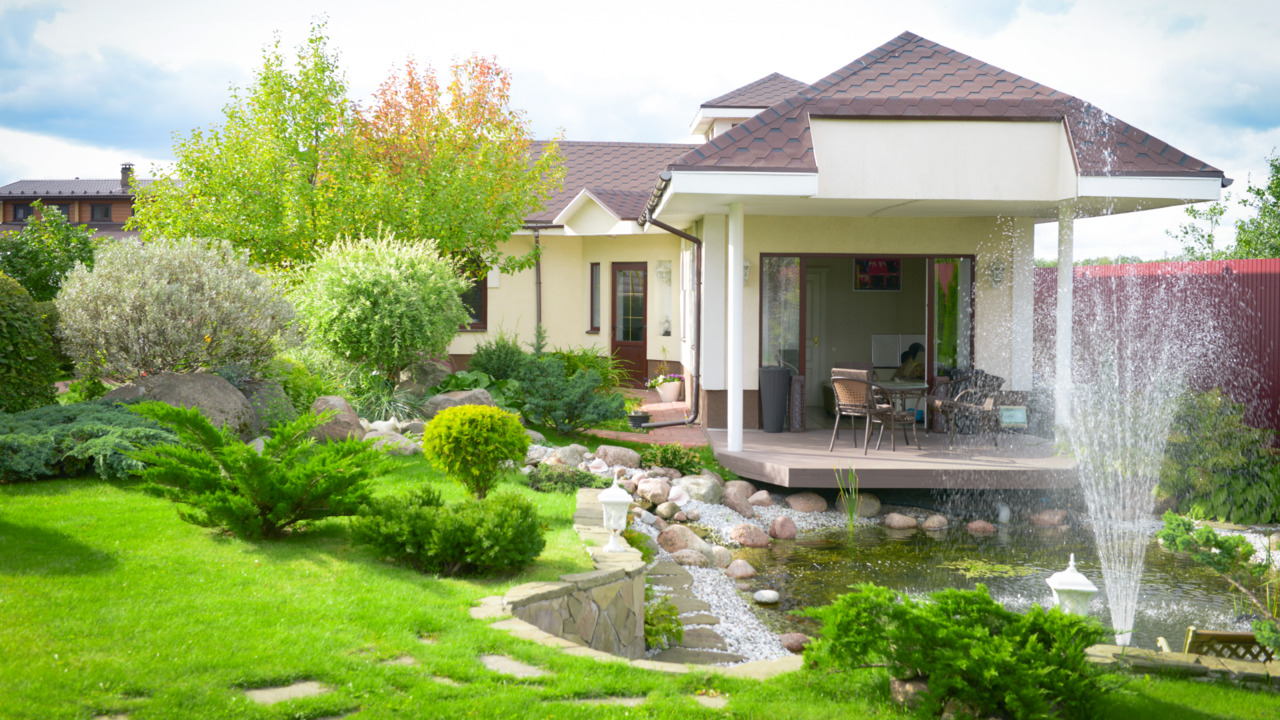If this is your first time designing a landscape, the number of options available may be intimidating. Which plants should you add, and where should they be placed? Should pathways be straight or curved? What about decorative elements like attractive seats, eye-catching plants, and birdbaths to attract colourful wildlife? Many of the ideas that affect how you set up your rooms inside can also affect how you plan outside.
Please read on to learn about the seven backyard design tips for beginners.
4 Basic Backyard Design Elements
Remember the following four major landscape design concepts when designing your yard:
1. Form
The form is crucial in home design since it creates balance and conditions that complement one another. For a mid-century modern house, rectilinear forms are preferable to soft shapes like triangles or circles for a Mediterranean-style home.
2. Mass
The process of measuring the visible size of your space in the form of areas filled by an item, such as a patio set, a fountain, or shrubs, is known as mass. Find a happy medium between having enough open space in your outdoor area and having enough bulk to fill it.
3. Lines
Lines help in the creation of a focal point as well as the physical flow of an outdoor area. For instance, horizontal lines via straight walks and rectangular furnishings may make the yard seem larger. Tall shrubs or trees may be used to identify vertical lines. Straight lines may make the yard seem cleaner and more formal, whilst curving lines can produce a more delicate and natural aspect. Consider how you want the yard to appear and feel before deciding which lines to emphasise.
4. Voids
Voids, or empty areas, also play a part in your environment. The voids should balance out the bulk and connect different components. Start by purposefully laying out the voids, then fill in the remainder of the space with your landscaping plans.
7 Backyard Design Tips
Here are some ideas to get your new garden landscaping project off to a great start:
1. Determine the Backyard’s Needs and Wants
Make a list of your aspirations and necessities. Do your kids need a play area? Do you want to learn how to cultivate vegetables? Make rough sketches of your yard with suggestions for where to place things; it’s a great organising method for beginners in backyard design. They do not have to be grand plans; they might be concepts. With little effort or investment, you may experiment with ideas.
2. Consider the Location
For beginners, the most significant features in backyard landscape design are to examine the sun and wind patterns. This involves considering how the sun and wind behave at various times of the day and year, determining your hardiness zone, and doing a soil test before planting. These particulars are critical for a great backyard landscape design.
3. Spend Time in Your Garden
If you make hasty choices for your yard, you may end up with solutions that are only effective in the short term. Allow it to settle before making any modifications. According to an expert, after spending more time outdoors, you’ll see areas you want to go and sit in that you hadn’t considered before. Choose versatile patio furniture and accessories that can be used in several locations in your yard.
4. Begin With Small
Take your time; start with a little flower bed, and work on it for an hour or two when you can. According to one designer, taking your time with your DIY landscape design can assist you in avoiding being sloppy or taking shortcuts.
5. Locate a Focal Point
It is a simple concept, but each successful garden layout should have a focal point or a series of focal points in succession. This might be a sculpture, a gorgeous tree, or a row of plants. A designer suggests allowing the design to guide your gaze across the environment.
6. Focus on Pricing and Scale
Scale and pace are two of the most difficult concepts for beginners to grasp when it comes to landscape design, but mastering them can give your yard a more finished look. There will be shifts in size, shape, and colour, towering plants growing up against a building or at the back of a flowerbed, and paths that lead people through the region.
A professional emphasises the need to balance repetition and new components. Repetition creates a feeling of coherence, but it should not be monotonous. An occasional new element is preferable to having a variety of components throughout.
7. Be Mindful to Change
Be truthful about what works and what doesn’t in your design unless you’re dead set on it. Even a professional designer has discovered that aspects she formerly appreciated no longer represent her style. It’s okay to experiment and make changes as you go.
In Summary
For beginners, patience is essential in landscape or backyard design. You may spread the effort and money over many years with a realistic and well-thought-out landscaping strategy. To ensure your project is manageable, take it one step at a time. Remember, this is intended to be enjoyable! You are making a place for yourself to enjoy. Small, consistent changes may transform your yard into the paradise you want.





